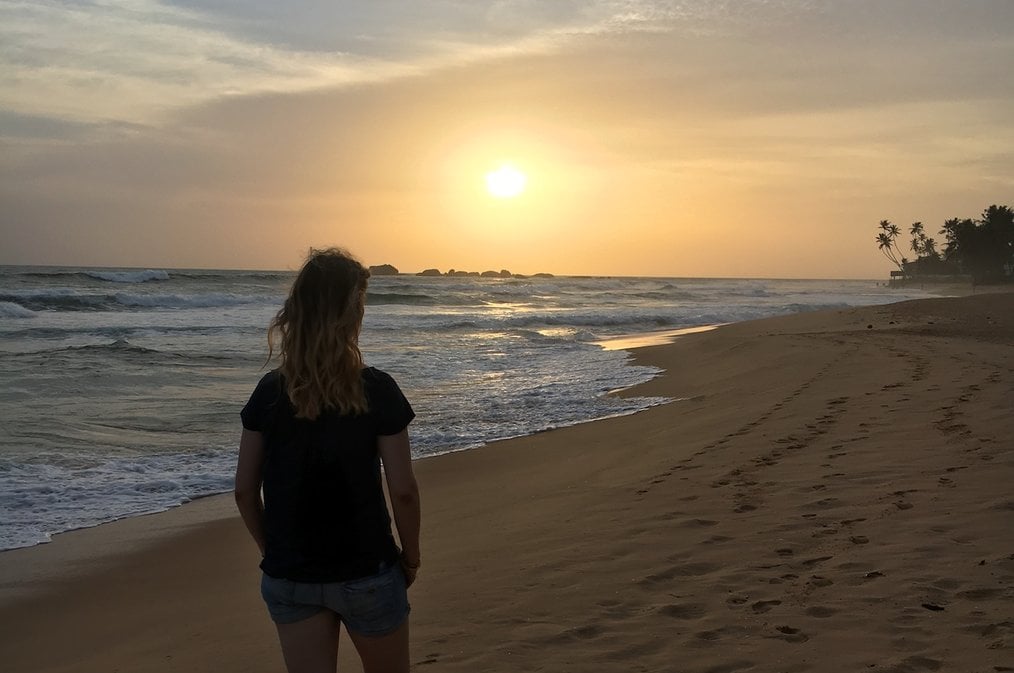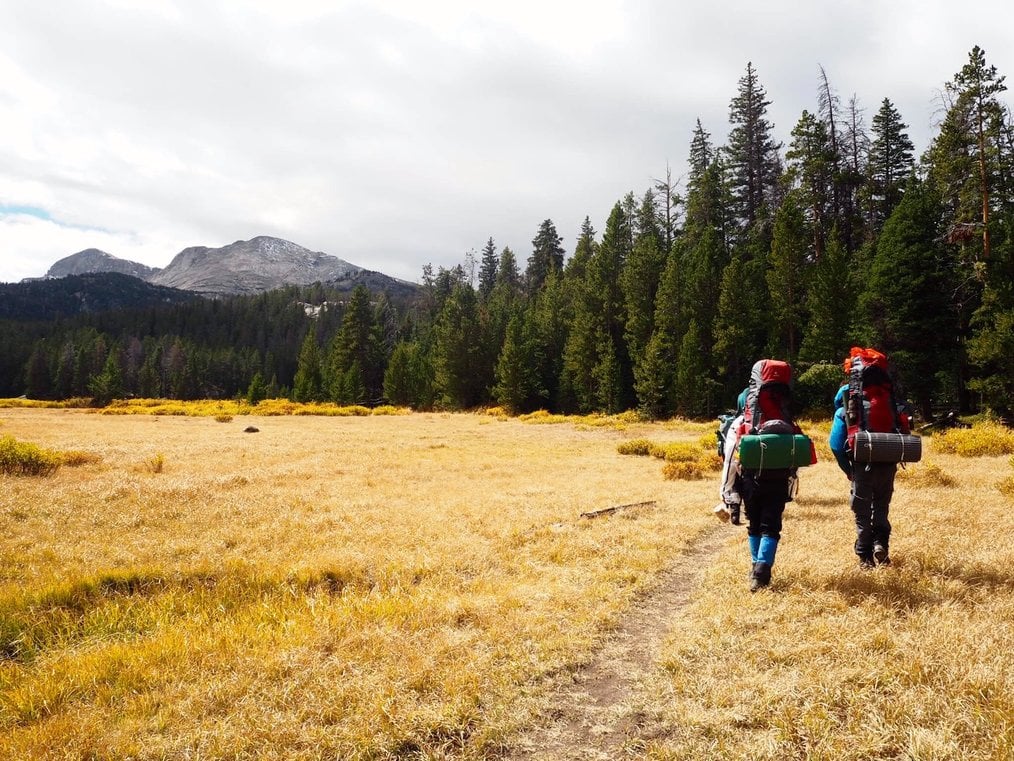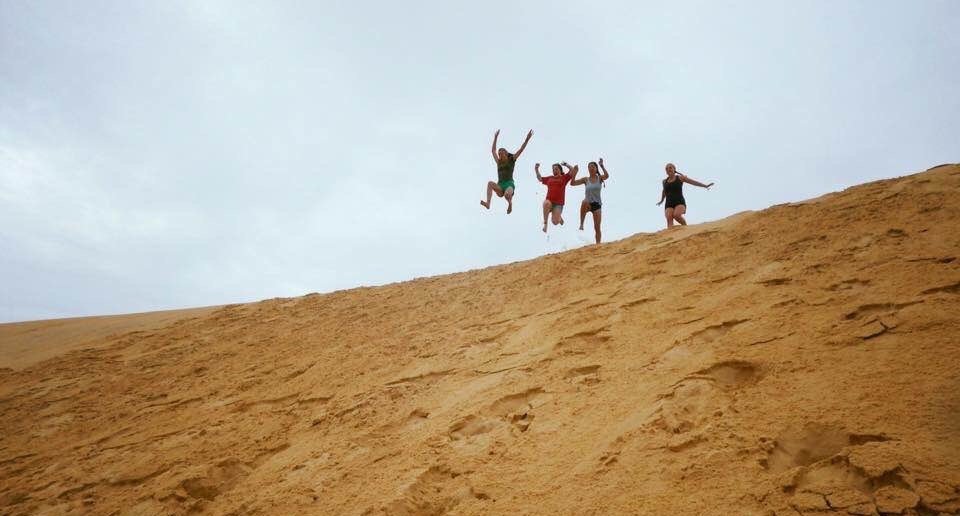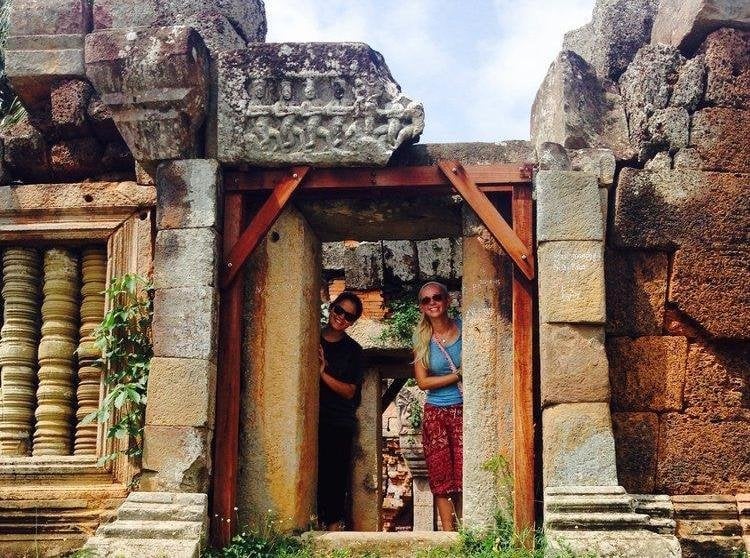How to Budget for Your Gap Year
Gap years come with many costs along the way. Prepare for these expenses and build an accurate budget with this quick guide.
Key Takeaways 🔑
- Decide the type of gap year you want to take in order to plan your budget. Some locations like the England or France will cost more than if you choose destinations like India or Cambodia.
- Consider planning your gap year to avoid high tourist seasons in order to save money on accommodation, travel, and activities.
- Outline costs you can anticipate before you leave. Vaccinations, gear, travel insurance, and costs related to visas and your passport can add up and shouldn't be left out of your overall budget.
- Brainstorm ways to save money. Cutting out small things, like store-bought coffee, can add up to savings over time. Moving home and taking on extra hours at work can also help line your pockets before your gap year.
- Once on your gap year, monitor your daily costs and be mindful of how much eating out at restaurants, transportation, and activities can cost you. There are cheap alternatives everywhere!

When you hear the words "Gap Year," do you picture yourself walking across the famous Sky Bridge in Langkawi, Malaysia? Or driving the Amalfi Coast in Italy? Or perhaps spending an entire day lost in the many rooms of the Louvre in Paris? Or maybe, the only thing you can picture is watching all of your money disappear?
A gap year can be an expensive -- and daunting -- undertaking, but it can also be one of the most worthwhile experiences of your life. If you’re at a place in your life where you’re able to leave your home behind and put your responsibilities on hold, then with careful planning and preparation, a gap year might just be for you! We’ve created this guide to help you plan out the gap year of your dreams -- and budget for every step of the way. Here are our tips on budgeting for your gap year from start to finish.
Pssst! You should also read: How to Take a Gap Year for Free or Cheap
Budgeting while you plan your gap year

Most people think budgeting for a Gap Year begins after you’ve already left the country, but even before you choose a destination, there are some upfront planning costs to consider. Most of these costs have to do with what type of gap year you’re planning, where you want to go and when, and how much assistance you will need before you leave.
1. Decide what type of gap year you're taking
Deciding what type of Gap Year you would like to take will be your first step. Would you rather apply to an established program, follow a set itinerary and have support every step of the way? Or would you rather be able to choose your own destinations and activities, plan the entire year yourself, and travel independently? Or possibly you’d like a combination of both? Each option will have its benefits and drawbacks, especially when it comes to your bank account.
The low-budget gap year
If you’re looking for the option that will cost the least amount of money, finding a paid job or internship during your gap year would definitely be your best bet. Although you will still have the upfront costs of flights, securing housing, travel insurance, food, and activities, you'll be able to actually make money while you travel.
That being said, paid opportunities to go abroad are competitive and difficult to find. You can partner with an established company, such as BUNAC, who has programs in Ireland, Australia, New Zealand, Canada, the UK, and many more locations, that will help you search for jobs and apply for visas. Using an official organization, however, will require program fees upfront -- from around $300 to upwards of $1,000, and remember a paid job is not always guaranteed.

The high-budget gap year
If you’re not looking for work or internship experience, you could still gain the support and direction of an established company for a gap year centered on volunteering, or language and cultural engagement, or even just purely for fun!
You could spend 4-12 weeks having adventures on the East Coast of Australia for a starting cost of $3,600. You could spend up to a year in Spain, learning to speak Spanish and immersing yourself in the culture for a weekly fee of $625. For an even heftier sum (but with a large amount of benefits), you could spend a year on an all-inclusive trip that allows for to travel 10 countries in 9 months for $55,000.
This is most likely the most expensive option for Gap Year. Although the price of these programs might create some “sticker shock,” the support and guidance they offer may be worth it for you.

The middle-of-the-road budget gap year
If those prices are more than you’re willing to pay, your next option would be finding a volunteer position that would provide housing and possibly even food.
You could travel with WorkAway or WWOOF, two organizations that allow you to stay with hosts around the world and receive housing and meals in exchange for volunteer work. Although you will still need to be able to cover all travel costs, the fee to sign up for these programs is very low ($42 for a year of access to WorkAway, for WWOOF it depends on the region you’re traveling to but stays around $25-$70 per year).
Other volunteer programs exist for relatively low program fees, depending on where they are located and what they provide – such as this 1-24 week program in Peru that starts at $310.

Go your own way
If you decide to travel on your own, your costs will largely be determined by your travel style and comfort preferences as well as your chosen destinations. Some shoestring budget backpackers manage to travel on $10 a day, while other jetsetters end up spending over $100 per day.
Remember, if you travel independently, you need to have enough saved to cover all of your costs, including travel, food, accommodation, insurance, necessities, etc. Also, think about the type of activities you will be doing -- will you be planning any tours that need to be booked in advance? Signing up for college classes? Booking language lessons? There may be multiple upfront costs that arise once you figure out what you would like to do. If you plan to move around to multiple destinations, your costs will increase dramatically.

2. Decide where you'll go on your gap year
Once you decide how you would like to spend your gap year, you can begin to think about where you would like to go. Don’t be afraid to dream of new places, but be realistic about your budget. Know that $5,000 in Southeast Asia, where the average daily cost of a country such as Thailand is $28, is going to last you a lot longer than $5,000 in Europe, where the average daily cost of traveling through Spain is $90. (Here's a helpful resource on how far a $5,000 gap year budget will go.)
You might also want to think about your country’s current currency exchange rate. If your currency has a weak exchange rate in your destination, your money is not going to last as long. Also keep in mind that some countries may require an additional cost for visas, vaccines, and of course, the different types of transportation needed to get there.
Below is a list of popular destinations grouped by their average cost.
| High Budget | Mid Budget | Low Budget |
|---|---|---|
| United Kingdom | Brazil | India |
| France | Morocco | Thailand |
| Japan | Turkey | Vietnam |
| Australia | New Zealand | Indonesia |
| South Africa | Tanzania | Colombia |
Your budget will last the longest in countries in Southeast Asia or Central and South America. In Africa, depending on the country, you may be able to get by on significantly less than places in Europe, the United States, and Australia, for example, which tend to be the most expensive.

3. Decide when you'll take your gap year
Of course, your in-country budget depends as much on when you go as it does on where. Traveling during the "high" season in heavy tourist areas means that prices for accommodations, food, and activities are going to sky-rocket. The best time to travel is during the "shoulder" or "low" seasons -- when tourist numbers are low, your wallet will thank you for the added savings.
If you have your heart set on spending part of your gap year in Europe, try not to plan your time there during the Spring or Summer. If you wait till late in the fall or winter -- especially around November -- prices will drop a good deal. In New Zealand, the offseason is from June to August (which is their winter), meaning that’s the best time to take a trip there. In Greece, March is the best time to visit. In Indonesia, September and October seem to be the best month to plan a trip there. Spend some time researching your travel destinations in order to plan out the best offseason route you can find.
Keep your eye out for flight deals and sales too. Flexibility could be the key to making your budget last longer! You might want to book only the first few weeks or months of your gap year and leave the rest open depending on your budget and what deals you might find. Or, you may want to book it all in advance so that you have everything planned out and know the exact cost. Whatever the case may be, leaving a little room for the plan to change slightly could help with costs.
Budgeting before you leave on your gap year

Once you know where you’re going and when -- it’s time to look at your pre-trip expenses. Start by creating a spreadsheet with your target budget at the top, as well as every possible expense.
These expenses will include not just your initial plane tickets, but also the following:
- Passport: For US citizens, the price is $110.
- Visas: Depending on the country/countries you are visiting, you may or may not be required to obtain a visa. The cost can vary from $25 to over $150, depending on the type of visa you are applying for.
- Vaccinations: Check your destination on the CDC website to see if vaccinations are required. The cost depends on insurance, but may be anywhere from $13 to $144.
- Travel insurance: The cost depends on the length of your trip, with a starting amount of around $40 to $80 and growing from there.
- Luggage: Your luggage cost will depend on how high quality or designer you would like to go, but the average cost sits right around $100-$200.
- Backpack: Again, the cost will be entirely based on your preference, but a decent travel backpack might cost around $50-$100.
- Travel or hiking shoes: If you plan on doing a lot of hiking, it’s worthwhile to invest in a good pair of shoes. Plan on spending around $80-$150.
- Travel adapters/chargers: $15-$30 each -- and you might need several depending on where you plan to travel on your gap year!
- International phone plan (either through your current carrier or by purchasing a SIM card when you arrive): This cost will vary based on your cell carrier.
- Camera: If you don’t plan on using just your phone, a digital camera could cost you anywhere from $100 for a basic point-and-shoot to over $800 for a high quality DSLR.
- Money belt: Yes, these are still handy to keep your most important documents, credit cards, and extra cash close. You can find these for $12-$20.
- Travel towel: It's always handy to have your own towel, as you can't always count on having linens available if you're traveling in various countries and staying at a variety of different accommodations. You can find a good travel towel from $10-$40.
- Travel toiletries: The price will vary greatly depending on your items.
All of these items might not seem too important individually, but they add up quickly -- and you can't leave them to the last minute as you get ready to depart. By accounting for them in your budget, you'll be better prepared for whatever happens while you're actually on your gap year.
Ideas for saving for your gap year
So you've laid out your budget, but how will you begin to save for your gap year? Here are some ideas to help you grow your bank account prior to departure.
- Work as much as possible: If your job allows, ask to work more hours. Not only will you earn more, but you'll also be less likely to spend money if you're working all the time. If your job can't possibly give you any more hours, get a second job, freelance or help out in the neighborhood. In the summer, offer to mow lawns. In the winter, offer to shovel snow
- Give yourself a weekly allowance: Once your work schedule and some sort of routine are sorted out, write down your expenses. Transfer that amount of money to your checking account at the start of the week. Make sure to stick to only spending what’s in your allowance and be brutal on yourself if you have to.
- Cut your vices: Cigarettes. Alcohol. Coffee. Clothes. Bottled water. We all have our quirks and bad habits, which often come at a price. Think about the one thing you don't need, but want every day, week or month. Next time you indulge in it - take note of the price. Now calculate how much that vice is costing you a year. You may think twice about that daily Starbucks stop and buy a coffee maker instead.
- Move back home: This is probably the hardest way to save, because having your own place gives you complete independence, but moving home will help you save more than any other suggestion on this list. Most people spend at least $400-$600 a month on rent. That's $4,800-7,200 per year, not including utilities. Your parents, brother or sister might ask for a bit of money, but you'll save a lot with this tip regardless.
- Start walking, cycling, carpooling and/or using public transportation: You might not need to set aside time to exercise at all if you stop using your car and start getting places the old-fashion way. Whether it be work, a friends house or the grocery store, if it's less than a mile, ditch your car. Walk or cycle to and from work instead of your daily run and you're saving time and money.
- Ask for donations to your gap year fund instead of presents: When your birthday or the holidays come around, instead of asking for more things, ask for something that will actually come in handy on the road - money. Explain that you are going traveling and a monetary gift will go a long way. Be sure to keep in touch with all the generous gift-givers to share pictures and updates of the trip that they've helped make happen.
- Exercise on your own: As fantastic as it is that you have a gym membership and you actually use it, you can exercise in ways that won't cost you a penny. these days there are plenty of free tools to try different workout plans and even work harder with the help of celebrity trainers. Nike Training Club is just one free app available that offers entire workouts and even comes with someone to motivate you.
Budgeting while on your gap year

Your daily costs on your gap year are going to be entirely dependent on the type of gap year you want to take. If you’re volunteering, you may have these costs covered by the organization you’re working with. If you are traveling with an official company, these costs may have been paid upfront. If you are traveling on your own, however, you will need to keep these costs in mind while on your trip.
Food & drink
The average cost of a meal in Bangkok, Thailand is $2.56 for an inexpensive restaurant. In Brisbane, Australia, that same meal will cost you $14.31. And in Basel, Switzerland, you’re looking at a price of $24.99!
Looking at average food and drink prices will help you know how long you can afford to stay in each area, and when you might be able to “splurge” versus holding back.
Accommodation
Luckily, there are more options than ever before for finding accommodations. You could try couchsurfing, where you may be able to find a place to stay for free. Hostels will usually be the next cheapest option, along with AirBnBs, and finally, hotels. If you’re staying in one place for a long time, it may be cheaper to rent a temporary apartment or room.
Know that the prices will change depending on where you are -- the average hostel price in the United Kingdom is around $20-30, versus an average cost of $12 in Colombia.
Transportation
Not only will you have your initial plane ticket, but you will have to think about transportation around the country you’re visiting, as well. Will you travel by bus? Train? Taxi? Uber? All of these will add additional daily costs. You will want to plan out travel costs for between countries, as well -- whether that’s through driving, traveling by train, or flying.
Program fees
If you do decide to participate in a Gap Year program, you may have initial program fees as well as fees while you are abroad. Speak with someone who works for the company you’re applying with to learn more, and don’t forget to compare costs between programs!
Tours & activities
Most people end up exceeding their daily budget due to this important category. You may think that you have enough planned out for tours and activities, but usually, once you arrive in a country you end up wanting to do more than you planned.
Although you can always find free or low-cost activities with a little research, make sure you plan enough money to participate in the things you’re most excited about.
Miscellaneous expenses
It’s a good general rule that you will always need a little more money than you budgeted for, especially when you think about all of the miscellaneous expenses that might arise. These include buying toiletries, paying for medication, paying for an overseas phone and data plan, buying internet time at an internet café, mailing letters or goods home, and any other daily expenses that might arise.
Sticking to a budget will be worth it!
Your gap year is sure to be a once-in-a-lifetime experience! Don’t let the initial cost scare you. As long as you take some time to plan beforehand, you’re sure to have a rewarding and meaningful experience that won’t completely wipe out your bank account. It will be expensive, but in our opinion, it will also be worth it!
